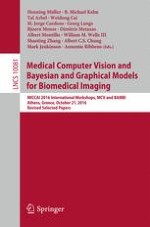
2017 | OriginalPaper | Buchkapitel
Constructing Subject- and Disease-Specific Effect Maps: Application to Neurodegenerative Diseases
verfasst von : Ender Konukoglu, Ben Glocker
Erschienen in: Medical Computer Vision and Bayesian and Graphical Models for Biomedical Imaging
Aktivieren Sie unsere intelligente Suche, um passende Fachinhalte oder Patente zu finden.
Wählen Sie Textabschnitte aus um mit Künstlicher Intelligenz passenden Patente zu finden. powered by
Markieren Sie Textabschnitte, um KI-gestützt weitere passende Inhalte zu finden. powered by